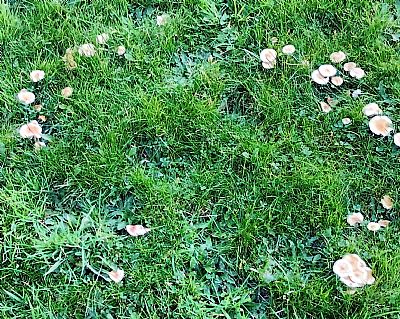FAIRY RINGS
We have all seen them. Neatly circular arrangements of mushrooms set out as if planned by a gardener. Except that they come up on lawns where gardeners don't usually want them or in forest clearings. We have become familiar with them from fairy stories. Places where the little people come to plan mishief on us humans or simply party. To the superstitious, this is the explanation.
There are various traditions of folklore aroudn the world. In Austria they are where dragons rested. The Dutch say this is where the devil churned his milk. In many British, Celtic and Nordic folklore they are mystical gathering places created by dancing fairies and elves. You can envisage tiny versions of stone circles, standing stone. Mushrooms could be used to sit on - perhaps toadstools. If you happened to step into such a ring you would be at the fairies' mercy and forced to dance until you went mad or died of exhaustion. Some Native American tribes attribute the appearance of fairy rings to dancing bison, the large rings made by the adults and the smaller ones by the calves. Today, UFO enthusiasts claim that the rings are a response to an alien spacecraft having landing in the exact spot where the ring formed. [Northern Woodlands website].
Hannah Vickers writing on the Woodland Trust website tells us :
Fairy rings, which are also known as elf rings or pixie rings, are naturally occurring circles made up of mushrooms. The mushrooms grow out of the ground in a circle shape, and some are small in size while others can grow up to 600 metres in diameter.
Fairy rings are caused by an individual fungus growing underground. The fungus sprouts lots of small threads, called mycelium, in a circular shape. A year later, the mushrooms pop up out of the ground at the edge of the circle, creating the fairy ring. The circle will start off small in size, getting bigger as it gets older.
Fairy Circles are great to find, but don't only look at the encircling mushrooms. Consider what is below the surface too. The complex network of mycelium the edges of which produce the mushrooms.

Unidentified mushrooms on a lawn, probably agaric.
NORTHERN WOODLANDS website : Frank Kaczmarek https://northernwoodlands.org/outside_story/article/fairy-rings
WOODLAND TRUST : https://www.woodlandtrust.org.uk/blog/2019/08/what-is-a-fairy-ring/

